Hamsters are adorable, fluffy creatures that probably catch your eye with their funny little antics any time you walk through a pet store. But how much do you know about wild hamsters, their history or caring for a pet hamster?
There are many species of hamsters in the world, both living in the deserts, mountains and steppes of the Eurasian continent, as well as cozied up as pets in homes across the world. But these fascinating and complex little creatures have plenty of secrets that you may not expect at first glance.
So, whether you’re already a loving hamster owner, a potential future hamster parent or simply an animal enthusiast always ready for a fun fact, here are 50 interesting things you may not know about hamsters.
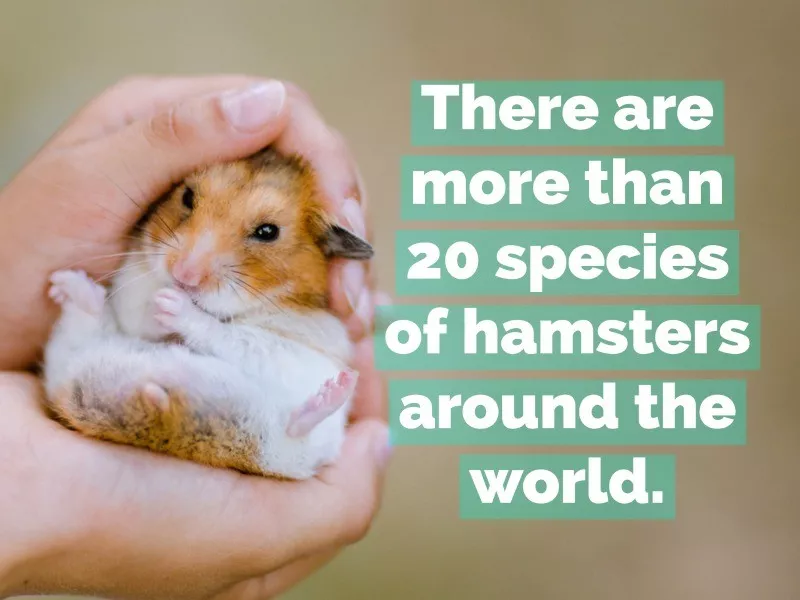
Getty Images
Only about five of these are domesticated and common as pets. Wild hamsters are most common throughout much of Europe and Asia.
Common domestic varieties include Syrian hamsters and several types of Dwarf hamster.
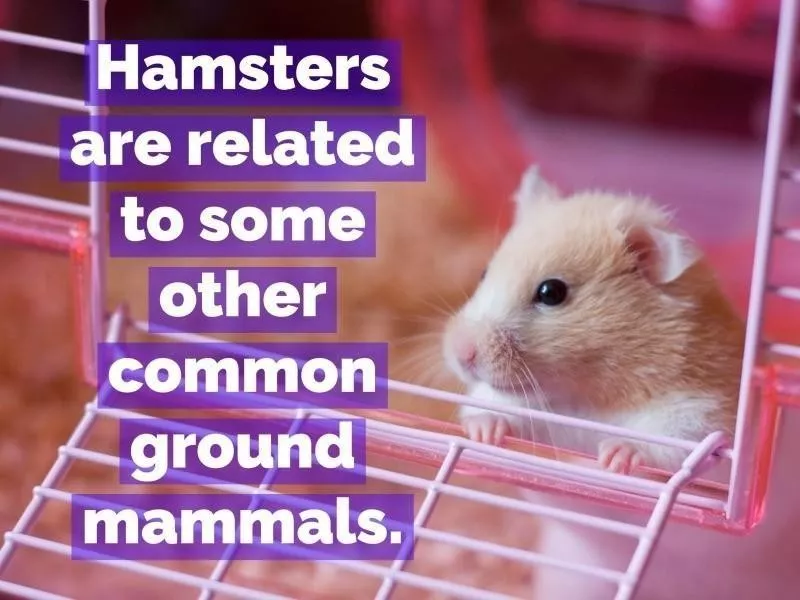
Getty Images
Hamsters are close relatives to voles, lemmings and mice, species that are often found more often in the wild and live frequently in similar regions and climates.

Getty Images
This is because within the few common species of domestic hamsters, there are a massive array of color variations.
Syrian hamsters (the most common pet hamsters), for example, can come in golden, white, cinnamon, sable, yellow, black, cream and several shades of gray as well as some rarer colors.
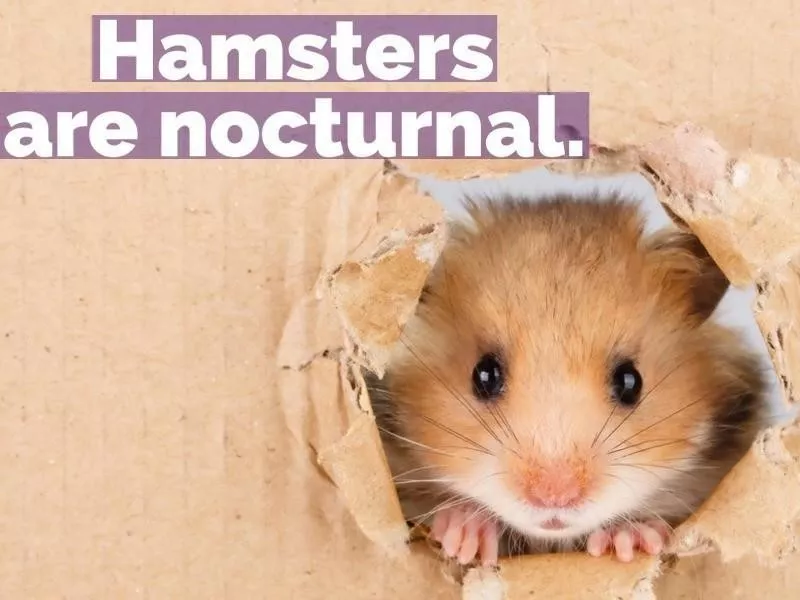
Getty Images
Whether in the wild or in your home, hamsters tend to do most of their activity in the evening and nighttime hours and spend much of daylight hours sleeping.
While they will sometimes pop up for a snack or a bit of activity during the day, they tend to nap when it’s light out and then become very alert and energetic in the evening and throughout much of the night.

Getty Images
If you’re getting a pet hamster it’s always a best bet to get a single pet or be incredibly certain that you’re getting two of the same sex. If not, you’ll quickly have more baby hamsters than you may be able to handle.
Hamsters of both sexes will take multiple mates, and females can have around four litters a year — sometimes more. Females are pregnant for only 15 to 25 days and litters can have up to 13 young, though the average is around seven. That adds up fast!

Not only can female hamsters have many large litters per year, but they can also get pregnant the same day they give birth.
Additionally, if they’re ready to give birth to a litter but don’t have the right conditions, their bodies can delay birth by up to nine days to give them time to find more secure shelter and sustenance.
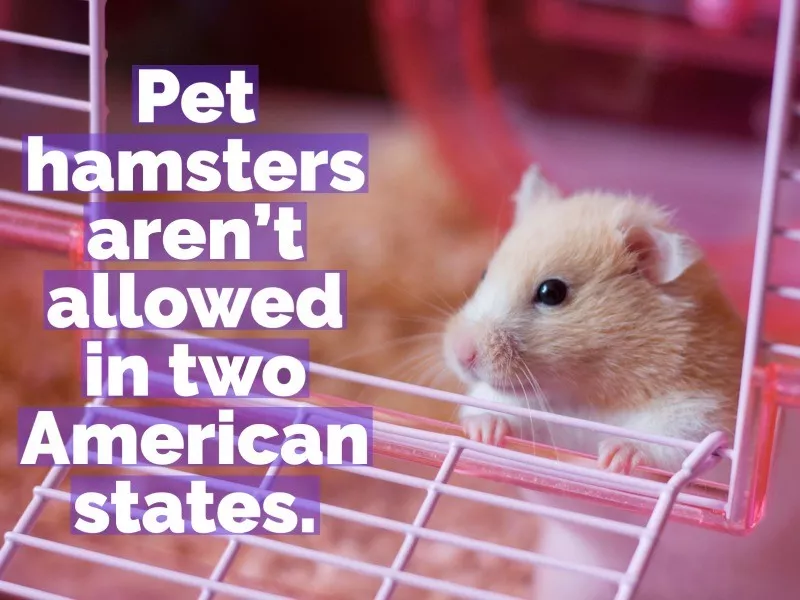
Both Hawaii and California don’t allow pet hamsters, due primarily to their high breeding rates and abilities.
The potential for rapid breeding means that even a couple of escaped hamsters can quickly turn into a loose wild population, which these two states aim to prevent by prohibiting them as pets.

Besides the issue of overpopulation, it’s generally recommended to only adopt one hamster, due to their solitary nature.
Unless hamsters have grown up alongside a sibling and they’re very comfortable together, they generally prefer to live alone and have their own space. At times, this can even mean hamsters put together will fight each other over space.

While it’s now very common to find multiple species of Dwarf hamster in pet stores, this wasn’t the case until just a few decades ago.
Dwarf hamsters are native to the deserts and steppes of Asia, specifically Mongolia, Siberia, northern China and Kazakhstan.
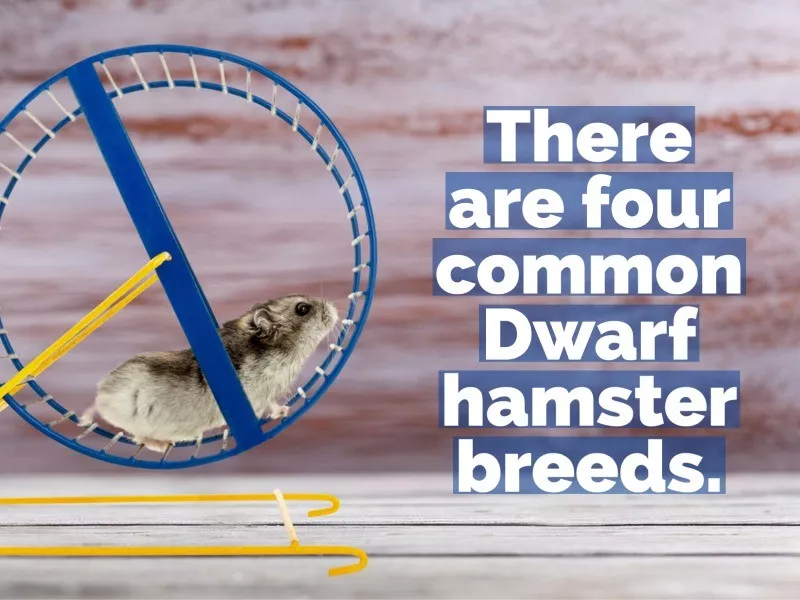
The ones you’re likely to encounter in a pet store or shelter are Roborovskis, Russian Campbells, Russian Winter Whites and Chinese. The Chinese Dwarf hamster is only technically in the Dwarf class, though it’s a slightly larger size and has a different tail.
Roborovskis are the smallest and fastest pet hamster species, though all Dwarf hamster breeds are quite small, measuring only a few inches fully grown.

Roborovskis, more commonly called Robos, are the most amenable hamster species to living in pairs. Remember these are the smallest domestic hamster species, and they’re also the least aggressive to other hamsters in their space.
However, this isn’t a hard and fast rule. It still mostly applies to siblings they’ve grown up with, and introducing them to a new hamster later in life is unlikely to go well.

It takes about two weeks for baby hamsters to even open their eyes. But from there, hamsters are both colorblind and nearsighted, making it difficult for them to see more than a few inches past their faces.
Instead they rely on other tools, their sense of smell and whiskers, to navigate their surroundings.

Hamster incisors continue to grow at a steady rate for the life of the hamster. If not handled properly, overgrown teeth can lead to medical issues and problems with eating, chewing and swallowing normally.
For pet hamsters, vets recommend providing lots of wooden chewable toys. Not only will this help keep their teeth filed down to a normal length, but it keeps them entertained and stops them from chewing on their enclosure, which you also don’t want.
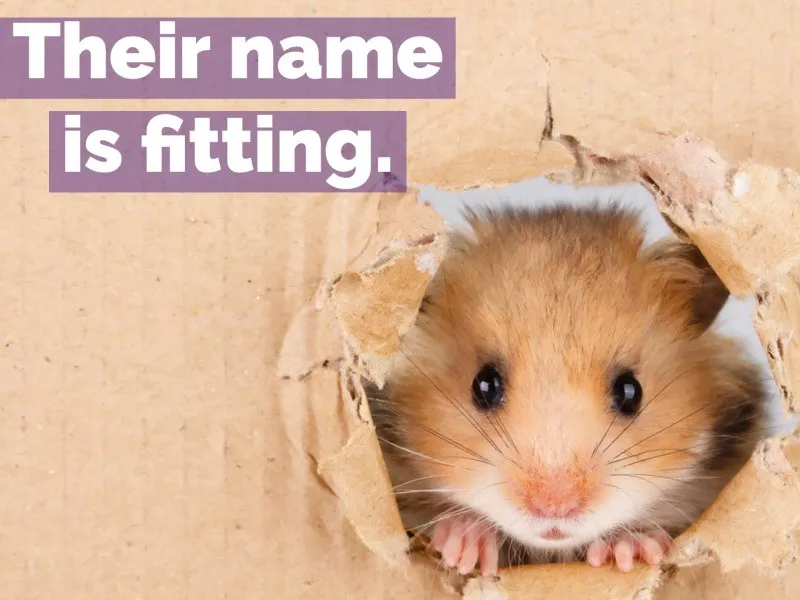
The word hamster comes from the German word hamstern, which translates to “to hoard.”
This is a pretty accurate naming, considering that most hamsters are particularly fond of hoarding food, especially in their own cheeks.
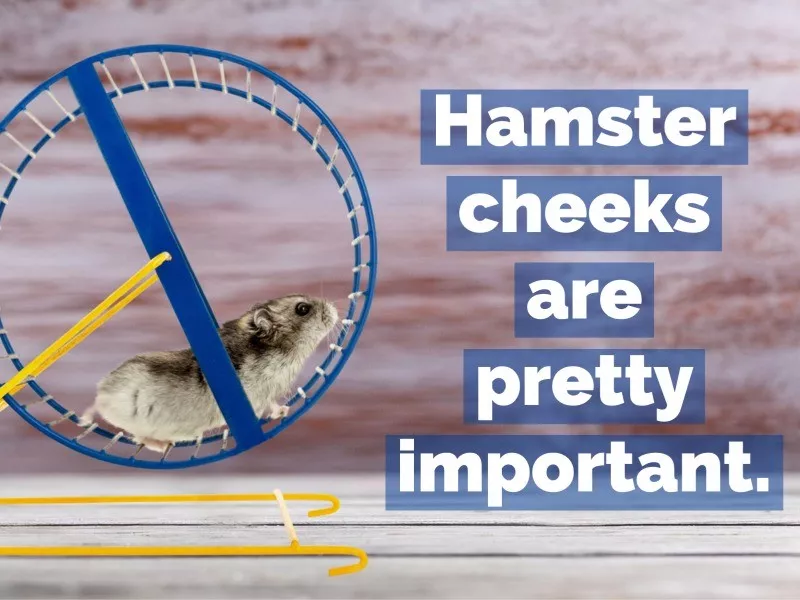
If you’ve ever watched a pet hamster pile treat after treat into its mouth without chewing or swallowing, you might be wondering what’s going on. In fact, hamster cheeks have pouches in them that essentially work like balloons, staying deflated most of the time and then expanding to hold a massive amount of items when needed.
They use these mostly for storing food, but hamster mothers will sometimes also store their babies in their cheeks.
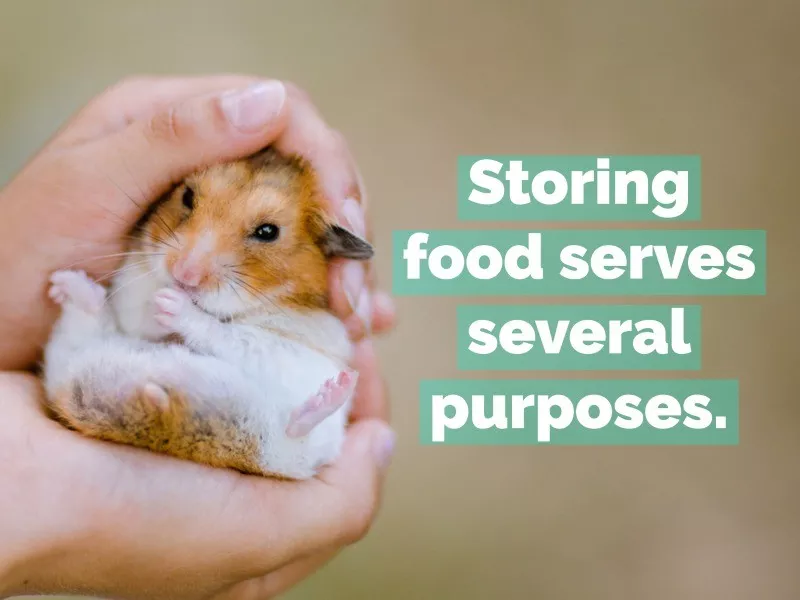
Why are these cheek pouches so expansive? First, they let hamsters collect food quickly, an important ability for small prey animals who need frequent nutrient intake.
Second, they store and protect food for transport. This allows a hamster to gather food in one spot and then take it back to a safer location to eat or store for later.
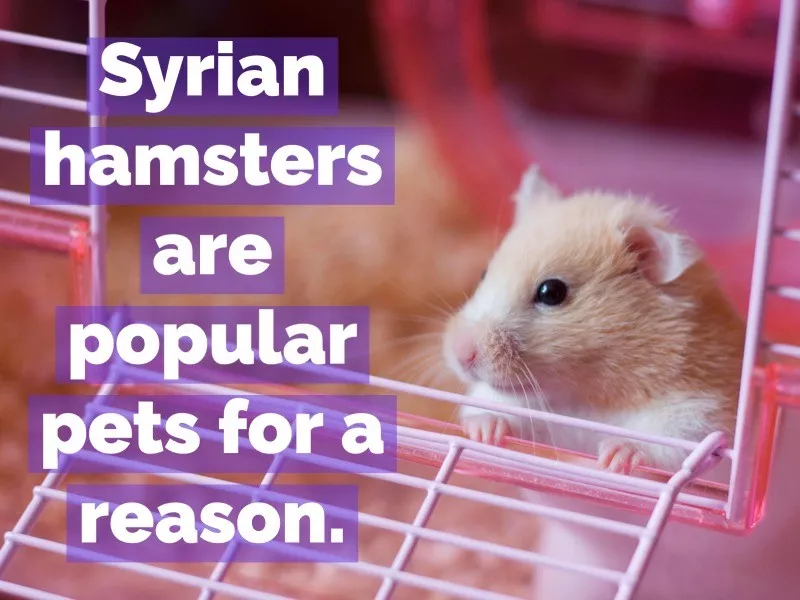
The most popular species for household pets, Syrian hamsters, are also known as teddy bear, fancy or shorthair hamsters.
They’re preferred by many because they’re especially soft and cute, but also because they’re the most friendly hamster species and even enjoy being held.
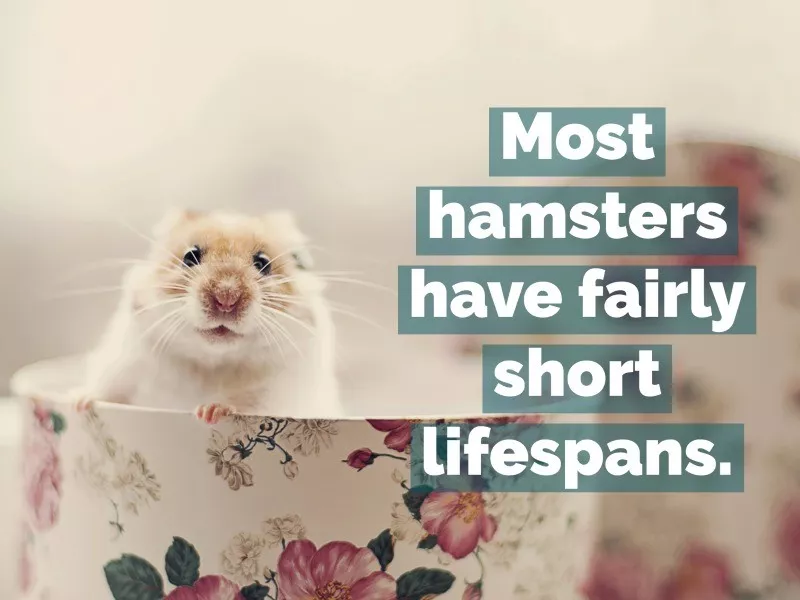
Like many small animals, hamsters don’t live particularly long lives.
However, with proper care and nutrition, most pet hamsters should have healthy lifespans of two to three years.
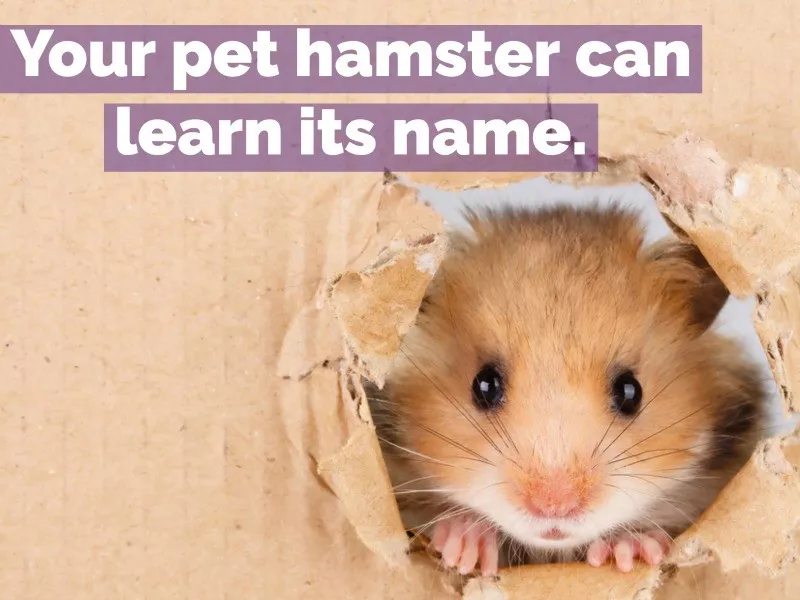
Hamsters are fairly intelligent and learn over time. If you repeatedly use your hamster’s name around them, they may learn it and start to come to you when they hear it.
They can also sometimes learn other skills or how to navigate their environment. But watch that they don’t learn how to escape their home instead!
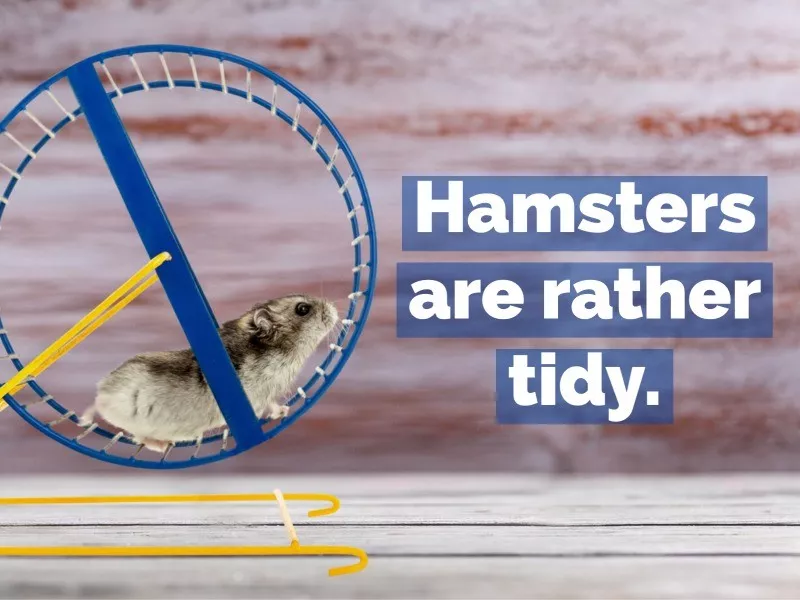
Pet hamsters are quite neat creatures, more so than some of the other small mammals that are popular pet options. They like a cleaner living area and most will relieve themselves in one or two specific corners of their habitat.
This makes it fairly easy to clean up after them often and keep their habitats smelling fresh.
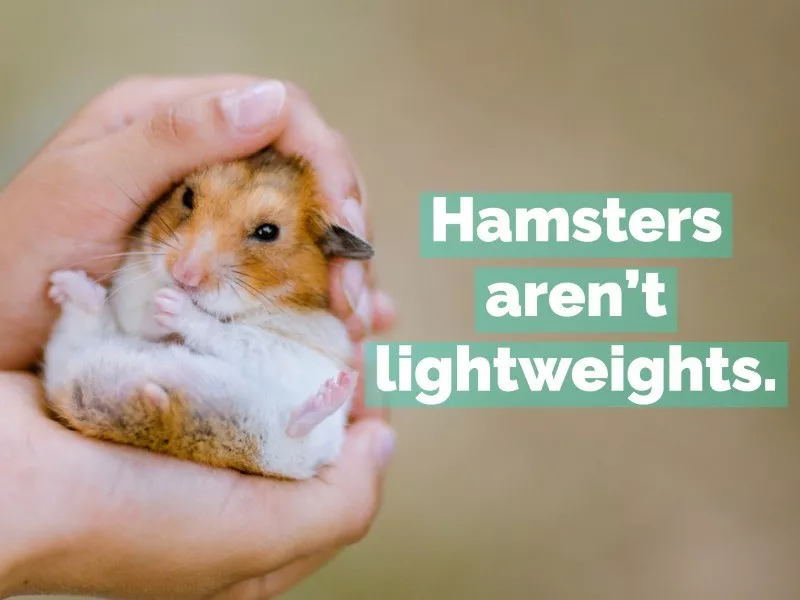
Yes, most hamster species have a fairly high tolerance for alcohol, often higher than most humans, even. For example, a study found that Campbell’s Dwarf hamsters could consume 10 times the amount of ethanol as a human before showing signs of intoxication.
This skill developed when wild hamsters would store fruit to eat during the winter and then eat it after it had fermented and become alcoholic.
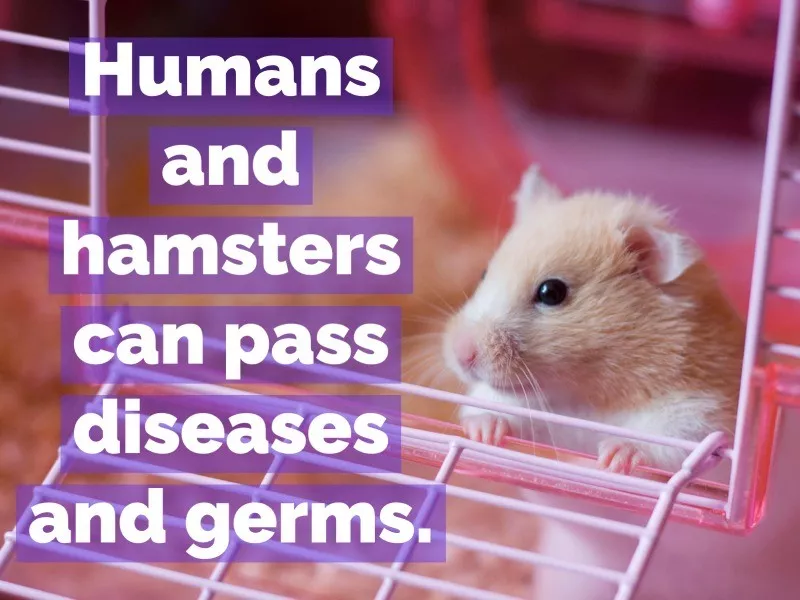
Hamsters can carry salmonella and a flu-like virus, both of which can be passed to humans and are risky for young children and pregnant women.
This is a rare occurrence but still possible. Conversely, hamsters can catch colds and flus from humans and show very similar symptoms.
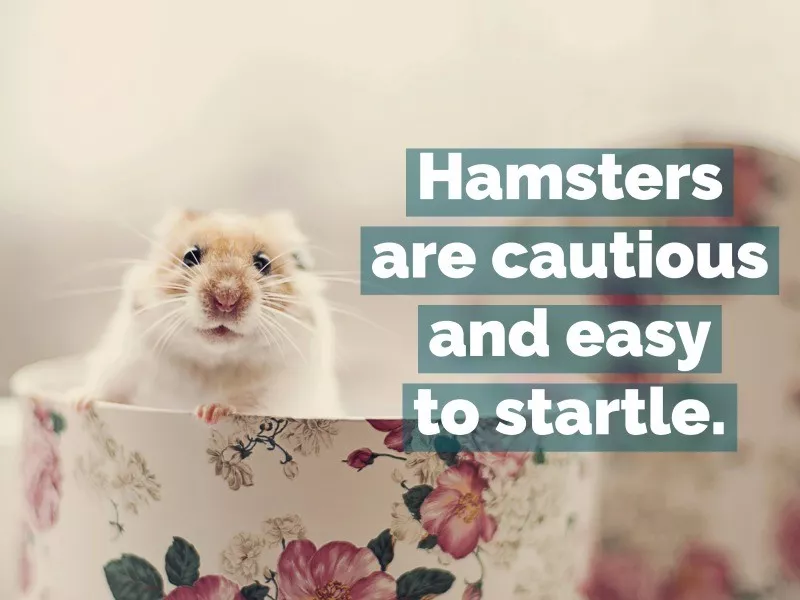
As is common with small prey creatures, hamsters are startled easily and stay alert most of the time.
If you have a pet hamster, it’s best to alert them that you’re approaching by calling to them before you open their enclosure or touch them.

Studies have shown that hamsters have distinct moods, and those with better toys, bedding and habitats made more optimistic choices that showed they expected pleasant futures rather than those given less pleasant environments.
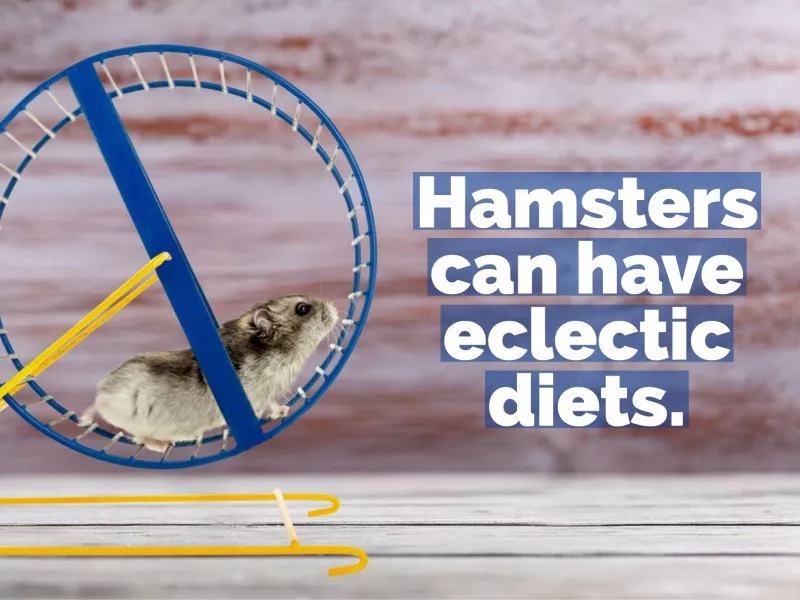
Pet hamsters tend to eat pre-mixed hamster diets of pellets, nuts, seeds and the like as well as some fresh fruits and veggies.
Similarly, wild hamsters will also eat things like grains, nuts, corn, produce and seeds. However, in the wild, some will also eat things like insects, lizards, frogs and even other small mammals.
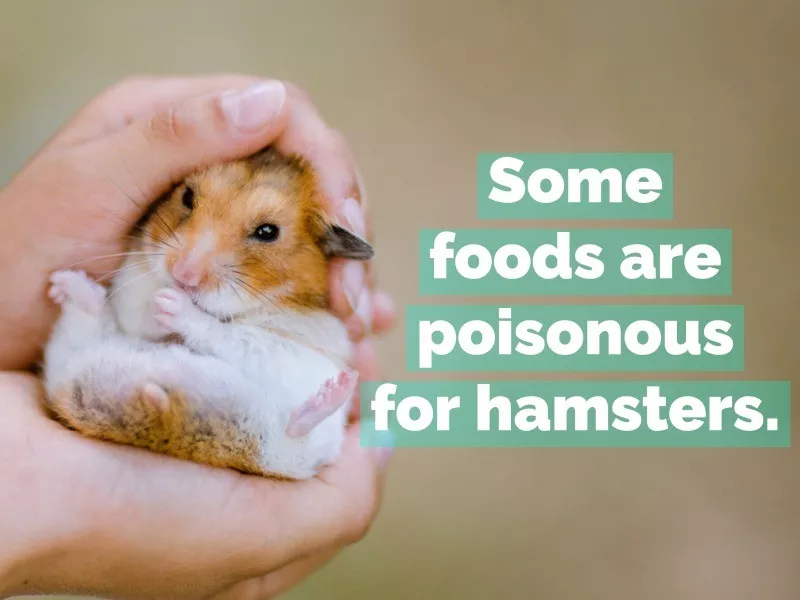
Of course, not all foods are safe for hamsters. In fact, avocado, apple seeds, grapes, elderberry, mushrooms, onions, garlic, peach pits, chives, potatoes, eggplant, rhubarb and tomatoes are some of the foods that can be poisonous to hamsters.
Most of them will instinctively shy away from these foods, but it’s best to avoid them when feeding as well.
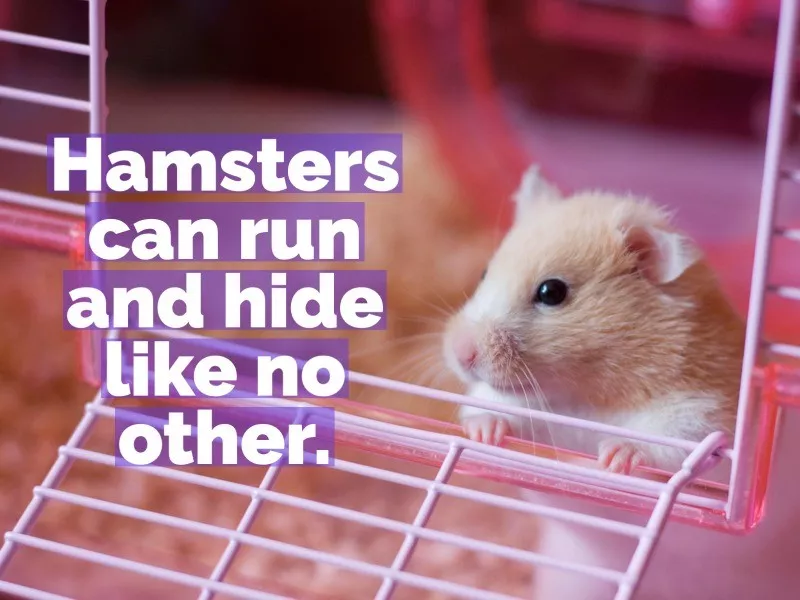
Hamsters are very fast for such small creatures, and the size and shape of their back feet also lets them run backwards.
They excel at hiding as well, having a natural instinct for it, even if not living in the wild. It’s best to provide pet hamsters multiple places in their habitat where they can burrow or hide.

You’ve likely seen a hamster running on a wheel, and notoriously, almost every pet hamster loves to run on one. However, if a wheel is too small for the size of your hamster, it can be bad for them, causing pain, spine problems or arthritis.
If a hamster knows their wheel is too small, they may stop using it, making them become too inactive. Ensure your pet hamster always has a wheel that lets them fully extend their body comfortably while running.
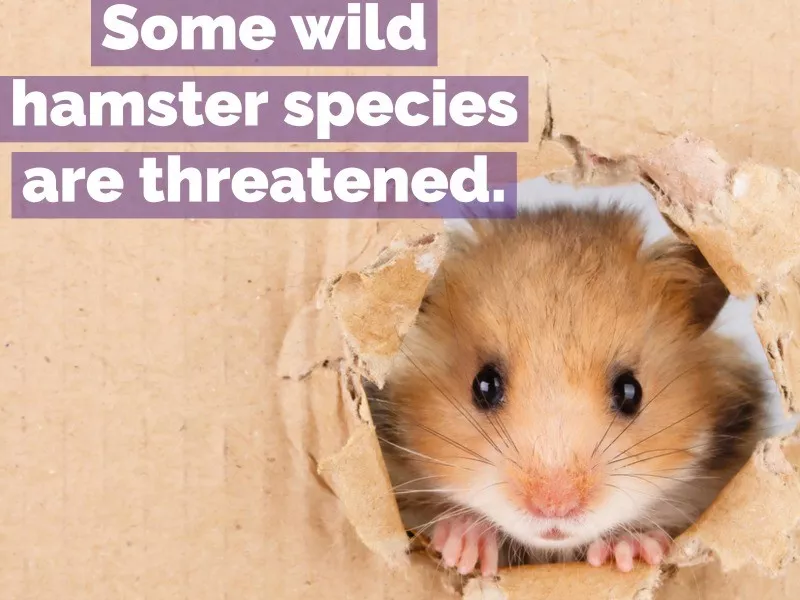
Of the 20-plus species of wild hamsters, only some populations are at risk, but when this is the case, it’s generally due to human development of their ecosystem and habitats.
For a period in the 1980s, wild Syrian hamsters were thought to have gone extinct, but some were later found.

If you prefer not to buy a pet at a pet store, you’re not alone, and there are always options to adopt small animals from shelters and rescues.
It may take a little more searching and effort, but it’s likely that a shelter or humane society in your area also adopts out small pets if you prefer to go that route.

When it comes to pet hamsters, caution is key. Hamsters are smart, crafty and small. They’re also prolific chewers.
If they manage to chew through their enclosure or open it somehow, they will escape and go on an adventure — and they can be hard to find! So, with a new pet hamster, having a securely closed habitat is essential.
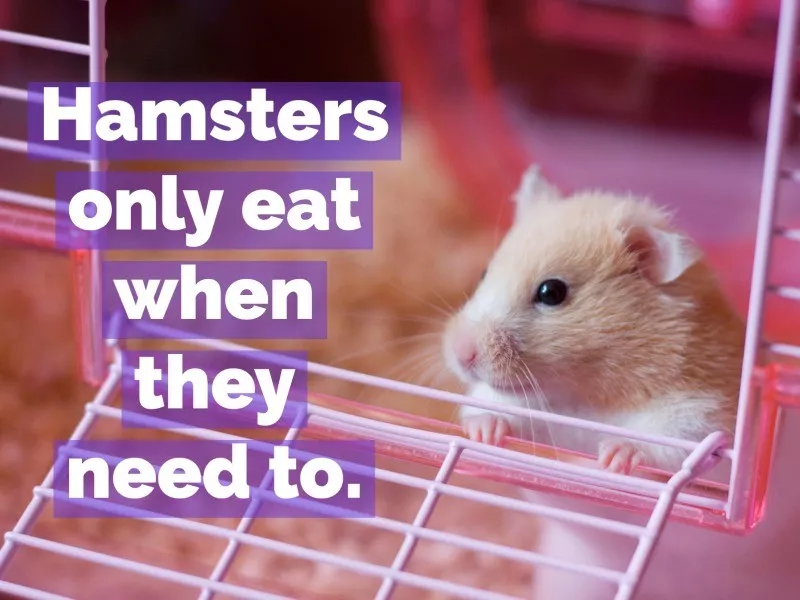
Unlike some animals, a hamster won’t eat past when it needs to. Hamsters generally eat until they’re full and store away food for later.
This also means they’ll leave some food sitting behind in their homes. If you provide them with fresh produce, always remove leftovers within the day so they don’t go bad. And replenish dry food every couple of days as well.
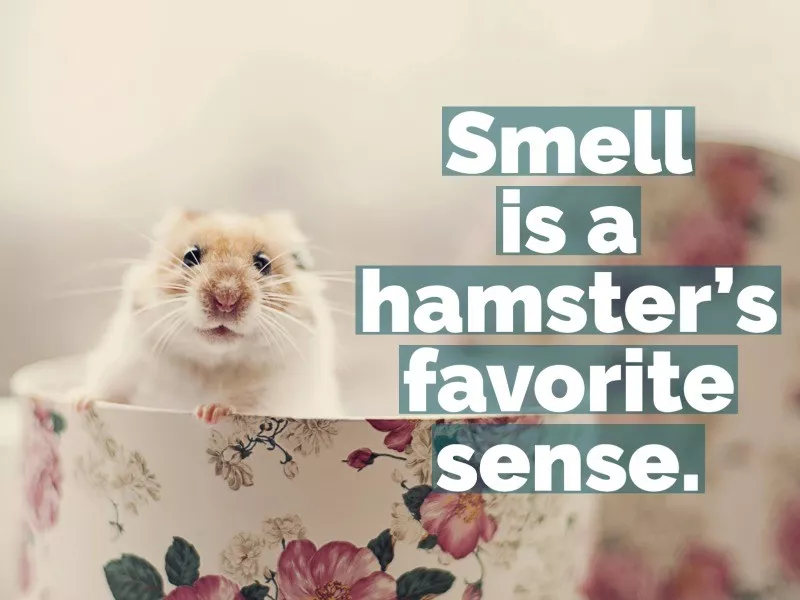
Hamsters have scent glands, which they rub on the objects around them to help them smell. They’ll do this off the bat in a new home, and it will help them get comfortable with their habitat and with you.
When holding or being near your hamster, it’s better not to wear strongly scented lotion or perfume.

Besides using smell to get more comfortable, a sense of smell helps hamsters out plenty of other ways.
It allows them to distinguish between the sexes, it helps them locate or relocate food, and it lets mother hamsters find and mark her babies.

Among the many species of wild and domestic hamsters, their size ranges quite wildly. The smallest species, Dwarf hamsters, can be as small as 2 to 4 inches, and other popular pet hamsters are around 6 inches.
However, some wild species in Europe are much larger, up to 13 inches.

The first hamsters were brought to the United States from Syria in 1936.
Of course in the decades since, other species have also been brought to the U.S. and elsewhere in the world as pet options.
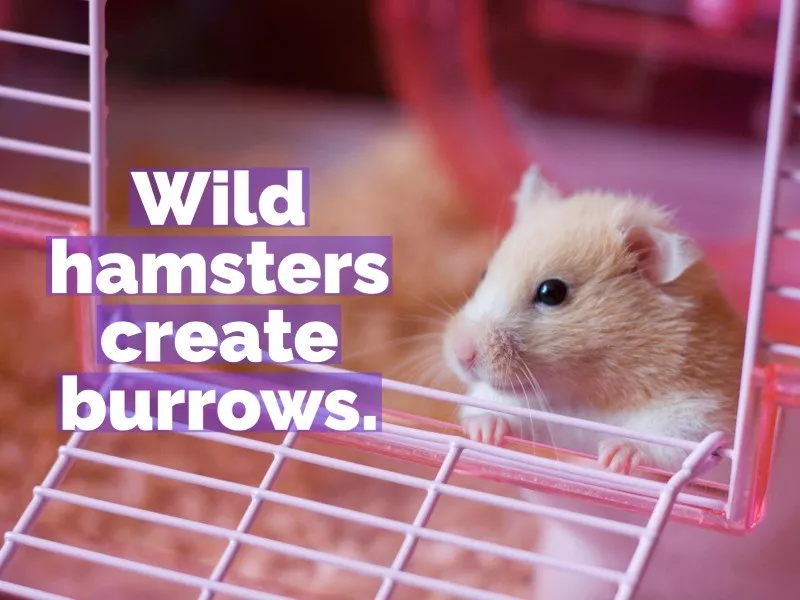
Hamster species living in deserts and steppe climates around Asia and Europe often dig burrows, a series of tunnels where they live, store food and have their young.
Pet hamsters mimic this behavior by digging into their bedding, which is why a thick layer is important to provide in their habitat.
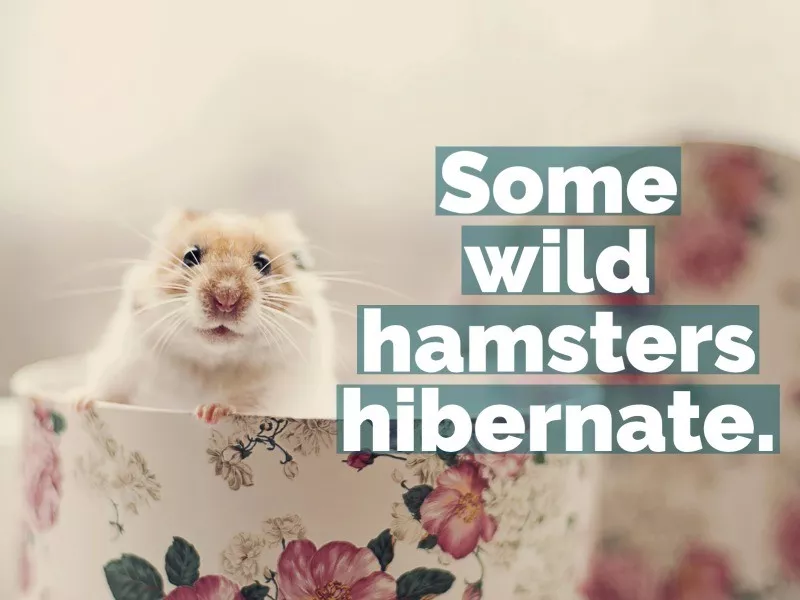
Depending on the weather conditions, hamsters in the wild will sometimes hibernate if the temperatures drop too low. They will still emerge from hibernation every so often to eat.
However, if they don’t have enough food stored, hamsters will wait to start hibernating until they’ve gathered enough food to last the cold season.
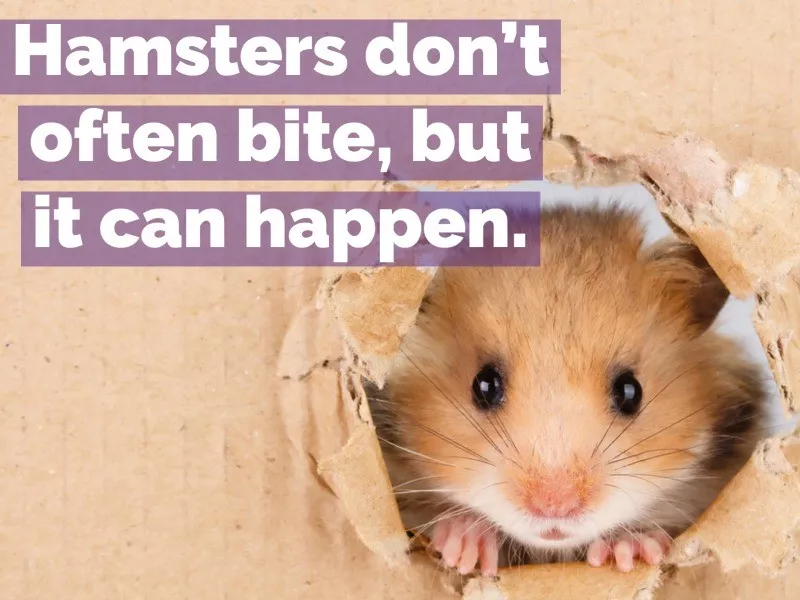
While pet hamsters are typically friendly and often will be social with you, that doesn’t mean they won’t ever bite you. They’re still animals and are prone to a range of emotions.
Hamsters are only likely to bite if they’re startled by a sudden movement or grabbed while they’re sleeping, so avoid doing this. Otherwise, they may occasionally nibble you by mistake if having a snack while in your hand. (Remember, they don’t see very well!)

Pet hamsters should be given as much space as possible. Enclosures should never restrict them to be unable to move, burrow and run around.
Ideally, if choosing a pet hamster, you should have the space to provide them a large and interactive habitat where they can roam and get exercise.
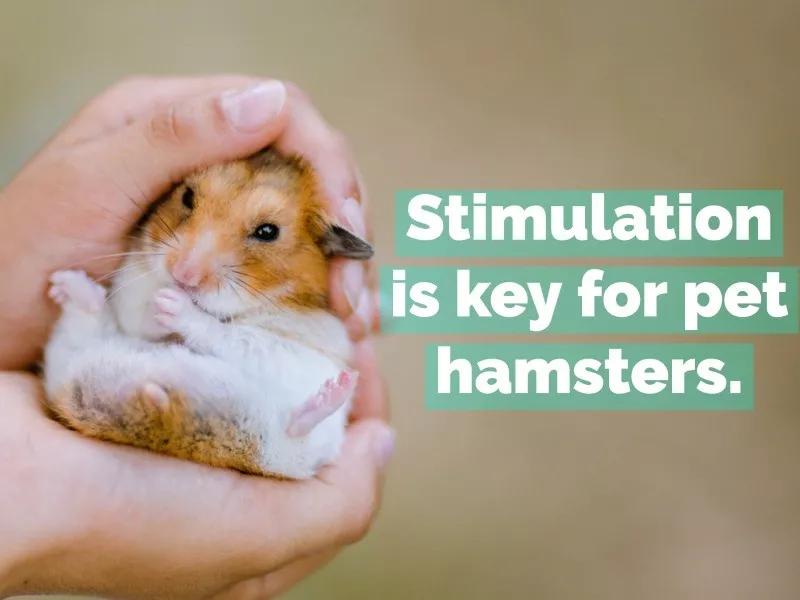
Hamsters in the wild are constantly on the move, their minds are alert, and they have plenty of activities. Pet hamsters have similar instincts even in smaller spaces.
Try to provide lots of stimulation for a pet hamster. Things like a running wheel, climbing toys, chewing toys, bridges, raised platforms, hiding houses, tubes and tunnels will provide lots of different spots to run, dig and chew.

With a pet hamster, use bedding made from recycled paper or aspen wood. Other bedding materials, like pine or cedar, can have strong smells or oils that may irritate or harm hamsters, which are sensitive to smells.
You can also always add ripped up clean toilet paper, paper towel or newspaper to their habitat for them to rip up and use for their nesting.

Hamsters are small creatures with delicate bodies. While they won’t be sensitive to normal temperatures, if your house gets extremely hot or cold with the seasons, they may be suffering or get sick.
Aim to keep the room they live in between 65 and 80 degrees Fahrenheit. Avoid drafts or direct sunlight shining on their habitats for much of the day.
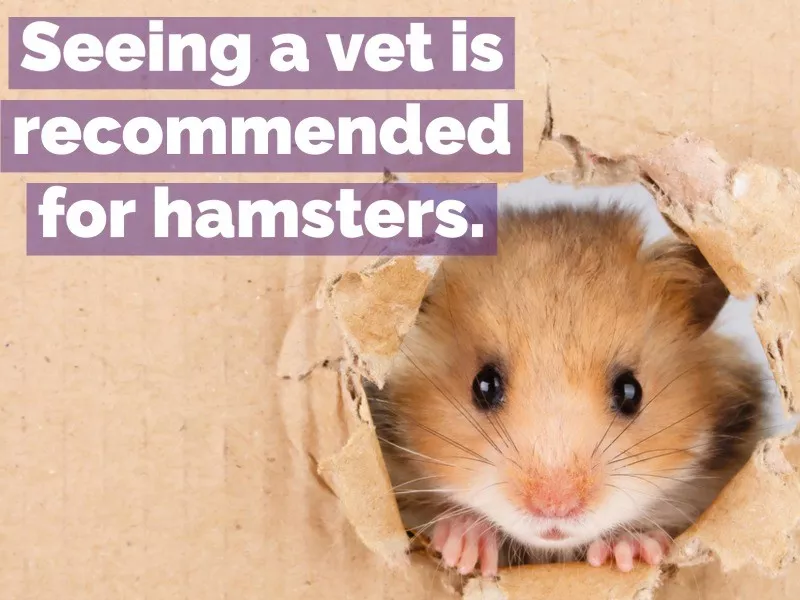
Even for a small pet like a hamster, having a reliable vet and yearly checkups is still important. Most standard vets might not see hamsters, so you’ll likely have to find an “exotic” vet or one who specializes in small mammals.
Vets should examine their teeth, feces and general health yearly.
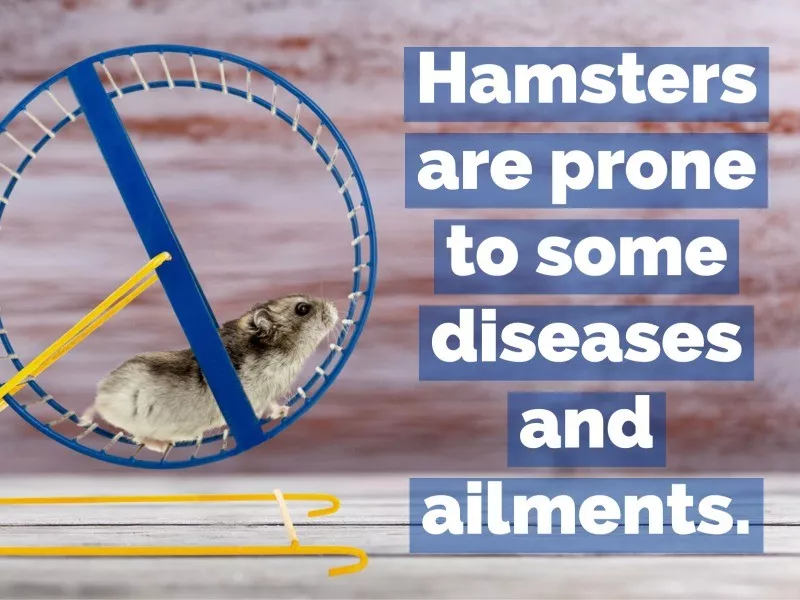
Like many creatures, hamsters have their share of common ailments, maybe more than most.
It’s not rare for a hamster to have diabetes, cataracts, heart disease, tumors, hair loss or glaucoma, but all of these would require some treatment to improve their quality of life and lifespan.

With a pet hamster, giving them time outside of a cage or enclosure to roam around is a great idea. It helps them stay active, get exercise and keep from feeling bored. However, time on the loose should be limited to when they can be closely supervised.
Hamsters are small and can escape quickly. Keep a close eye on them when they’re outside of their habitat to avoid mishaps.
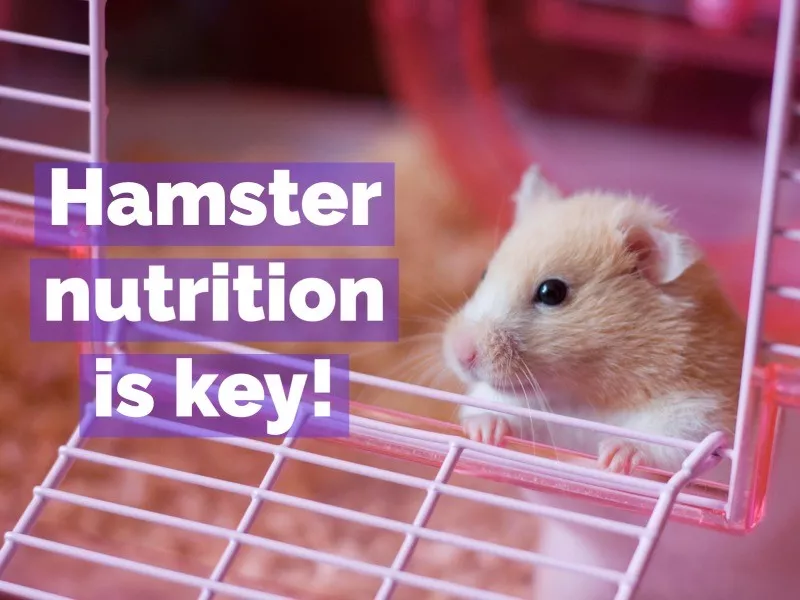
If you have a pet hamster and want to keep them healthy and alive as long as possible, the best way is to make sure they have a great nutritious diet. First, provide a supply of fresh, clean water at all times.
Feed them high-nutrition hamster pellets and a blend of other seeds and nuts. And incorporate small percentages of fresh fruits and vegetables occasionally, making sure to remove leftovers before they go bad.
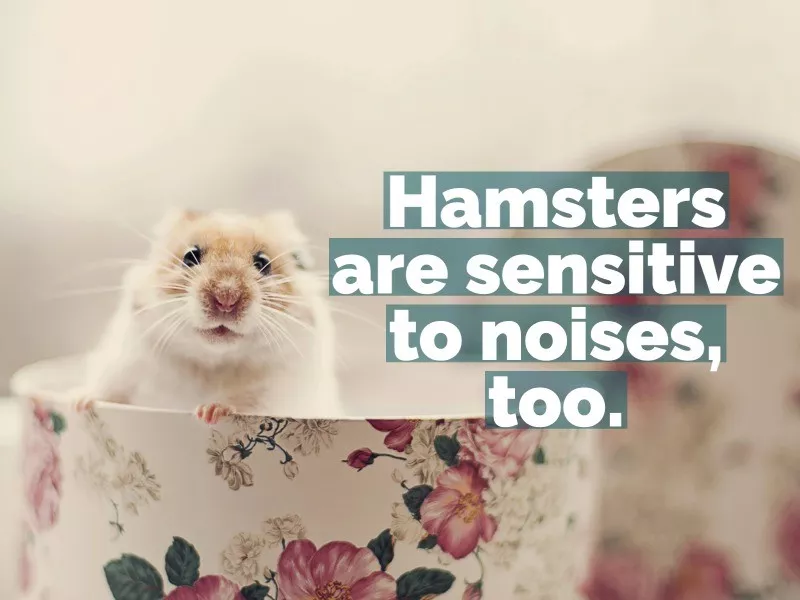
Though weak in the sight department, they make up for it with keen smell and hearing. Hamsters catch sounds when their ears are cocked upright.
They can learn particular sounds and will become familiar with the sound of their food or their owner’s voice. They will be overly sensitive to high-pitched sounds.
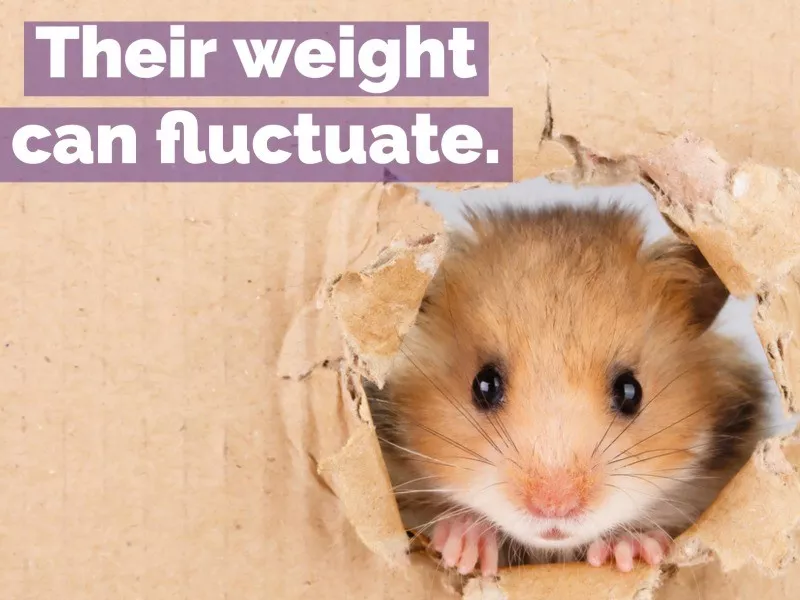
Despite not hibernating when living as pets, domestic hamsters still often lose weight in the fall months as winter approaches.
This, however, is due to an increase in their exercise level and happens to correspond to the biological instincts of their wild ancestors.
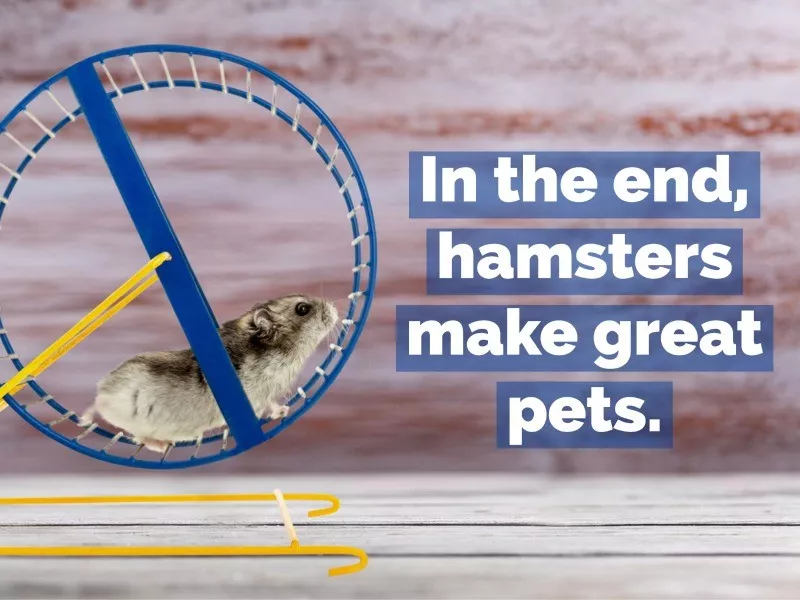
As long as you’re ready for the commitment and have the space, a hamster can be an amazing pet. In general, they require less maintenance, money and space than a dog or cat but still provide companionship and entertainment to you as a pet owner.
Many hamsters are affectionate, and they have unique and expressive personalities.
